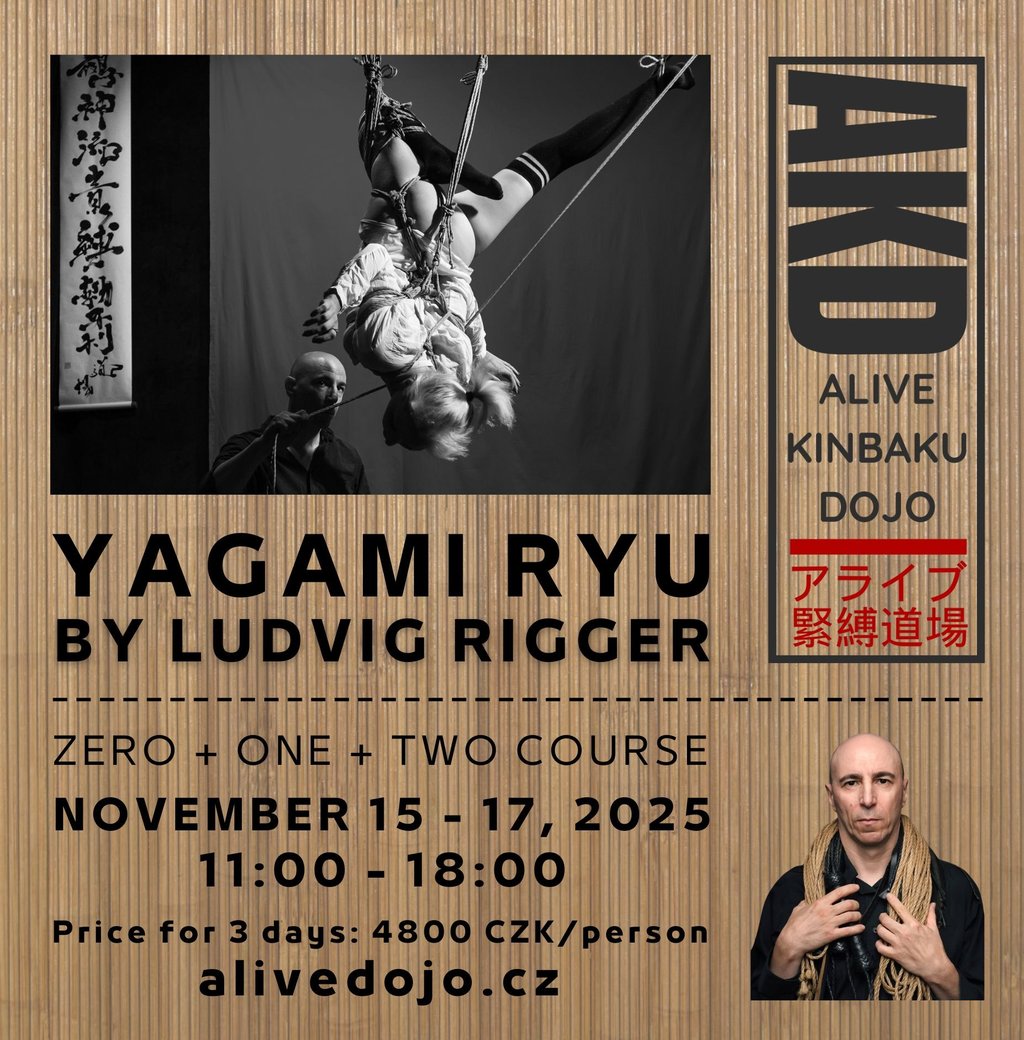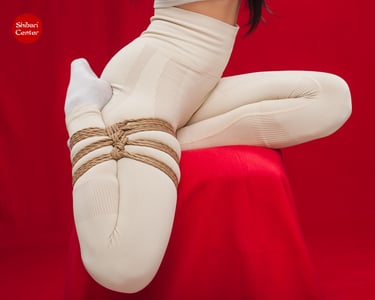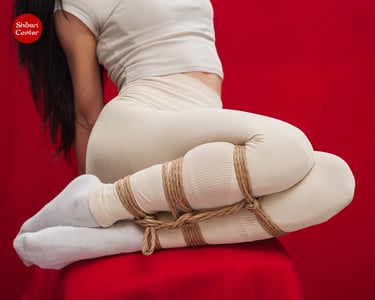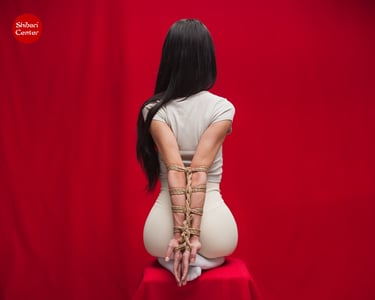Yagami Ryu by Ludvig Rigger - Course Zero One Two
November 15 - 17 2025, 11:00 - 18:00, 4800 CZK/person/3 days
CELODENNÍ WORKSHOPAKCE PRO ZAČÁTEČNÍKY
11/14/20234 min čtení


Workshop will be held in English.
You can only register for the workshop as a couple or as a single observer. To make a binding reservation, you only need to pay 50% of the price. The rest of the payment needs to be paid by the end of August 2025.
(Priority registration for Czechs until the end of April 2025.)
Full price:
4800CZK/person
(10% discount for students)
Single observer:
800CZK/1 day or 2000CZK/3 days
(limited spots available).
The price of the workshop also includes a ticket to Friday's performance.
Contact: alivekinbakudojo@gmail.com
Lecturer: Ludvig Rigger
Saturday Day 1 - Zero Course
Designed for beginners. It focuses on fundamental techniques with minimal use of knots or lockings, ensuring an accessible introduction to tying.
Introducing the Hibari Locking as taught by Yagami Sensei and Kanuki.
Calf ties. Connecting thighs to the waistline using Kanuki. By introducing Hibari Locking in combination with Kanuki, students learn fundamental structural techniques applicable to a variety of positions.
Single column tie, based on the reef knot and granny knot. Understanding rope directions and their applications. Choosing between different tying methods based on context. Developing a structured approach to secure a single limb.
Double-column tie, which builds upon the single-column tie with the addition of Kanuki. Students explore variations such as: Connecting two columns with a fixed distance, allowing flexibility between bound limbs.
Tying techniques that resemble psychiatric restraint jackets, using rope instead of fabric
Using rope to restrain wrists in various positions, enhancing adaptability.
Additional Course Elements
Beyond tying techniques, the course incorporates key principles that enhance rope play:
Taijutsu and Body Manipulation.
Students learn how to: Transition their partner from sitting to lying sideways or onto their belly. Rotate and move their partner into different positions.
Guide their partner to stand up or sit down.These skills are particularly useful when working with one or two ropes, allowing for a more dynamic experience.
Connection, Tension, and Rope Handling.
The course places a strong emphasis on the connection between partners. Key aspects include. Developing tension control. Understanding rope handling techniques. Adapting techniques to suit the partner’s preferences.
While this is a beginner-level course, the techniques taught are fully functional and stable, allowing for both exploration and practical application in more advanced settings.
Limitations and Focus Areas. The upper body is generally avoided at this level.
A simple Gote chest harness may be introduced as an example, but students are not encouraged to tie the arms behind the back.
The focus remains on tying the lower body and hip area, including:
Fixing forearms to the calves or thighs. Exploring variations within these constraints.






Sunday Day 2 - Course ONE - Introduction to Yagami Ryu Basics
Course Overview: This course introduces the foundational techniques of Yagami Ryu, focusing on four primary shibari techniques. These techniques emphasize single-hand ties and the Gote (hands behind the back) position. Mastering these fundamental techniques requires an understanding of body posture, joint locking, and rope handling to ensure stable and effective ties.
Techniques Covered:
1. Koden Shibari (Ancient Way of Tying)
Resembles old Hojo Jutsu ties. Wraps around hands, forearms, and arms, but not the chest or torso.
Optional application - wrapping around the waist and thighs to create a hip harness or Agura position.
Focus on connecting three or four columns for various applications.
2. Kaeshi Nawa Shibari (Reverse Tension Tie)
Involves a change in rope direction for added control. Can incorporate an additional rope around the neck or below the chest. Connects the upper chest, arms, and forearms behind the back.
3. Ippon Shibari (Armbinder with locked elbows)
Positions the arms straight behind the back, binding them into one solid structure. Functions as an arm binder using Kanuki or Kaeshi movements (reverse tension). Highly restrictive and challenging in terms of breath control and flexibility
4. Wakizarashi Shibari (Exposed Armpits Tie)
Arms positioned with wrists behind the neck and elbows raised. Similar to the Western "bunny position" but with specific Yagami Ryu hand placement. Historically used for public humiliation, but now a challenging endurance position. Includes Kanuki elements for enhanced stability and the same pattern can be applied to Agura position.
Taijutsu Adjustments: Effective execution of these techniques requires proper joint locking and shoulder adjustments. These are Yagami Ryu Taijutsu movements:
Tettori Sankaku (Gote position): Locks the shoulders using controlled pulling techniques, similar to joint adjustments in massage therapy.
Tenbin Tori (Ippon Shibari): Ensures the arms remain straight, wrists touching behind the back, with the upper palms facing outward. Creates a restrictive arm binder where elbows are locked, reducing flexibility and increasing breath control challenges.
Kote Tori (Wakizarashi position): Establishes stability by locking hands behind the neck without requiring muscular support. Ensures hands stay in place without effort.
Variations and Applications:
Ura & Omote Variations: Different perspectives and movements for Ippon Shibari and Wakizarashi, including front, back, and sideways positions.
Hip Harnesses & Agura Applications: Using Koden Shibari and Wakizarashi structures to create stable Agura positions with Kanuki elements.
Front vs. Back Tying: Adaptations for individuals who struggle with locking their arms behind their back, allowing for frontal positioning.








Monday Day 3 - Course Two: Suspension Basics
Core Concepts:
Kanuki Shibari. The foundational upper-body tie in Yagami Ryu, practiced in every lesson. Uses two ropes to maintain proper structure and safety in suspensions.
Simple Hip Harness
Connects the waistline to one thigh in an asymmetrical fashion. Utilized for multiple suspension variations.
Suspension Types:
1. Vertical Suspensions
M-shaped Suspension
Agura-style Vertical Suspension
Running Man Suspension
2. Sideways Suspensions
3. Horizontal Suspensions
Face-down. (Optional) Face-up
4. Head-down Suspensions (Introduced at a later stage for advanced students)
Suspension Line Attachments:
Kanuki Shibari: Back & Side Attachments
Hip Harness: Front, Side & Back Attachments
Single Column Tie: Thigh or Ankle Attachments
Students progress through floor ties → partial suspensions, → full suspensions based on confidence and experience.
For those who struggle with hands behind the back, alternative ties include:
Chest Harness (hands in front of chest)
Toryo Shibari - Arms at Torso Sides
Key Focus: Understanding balance and suspension sequencing. Repeating Kanuki Shibari and Hip Harness in every lesson. Refining Yagami Taijutsu Sankaku Tettori techniques.



WITH YOURSELF
Comfortable clothes and about 8 eight-meter ropes. New ones can be purchased on site. There are tatami puzzle mats and carpets on the floor, we recommend bringing your own blanket to define your personal space and for hygiene reasons.
MEALS
We can go out for lunch together, there are a large number of restaurants and cafes in the immediate vicinity. There is a kitchenette on site with the possibility of purchasing hot and cold drinks.
Overnight stays in the Dojo are possible by prior arrangement in your own sleeping bag for 150 CZK/person/night. Students free of charge.
Praha 7 - Holešovice Czech Republic
